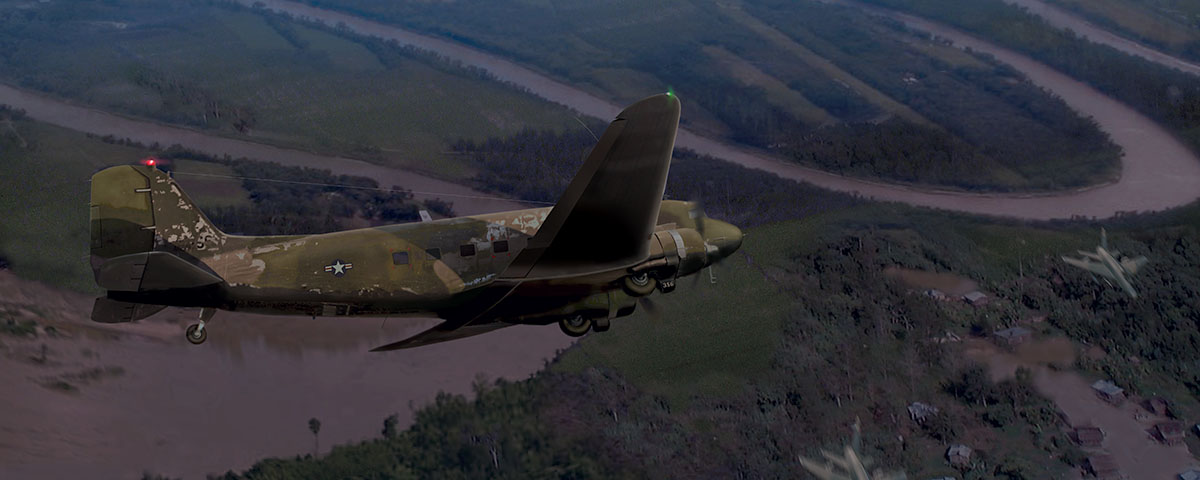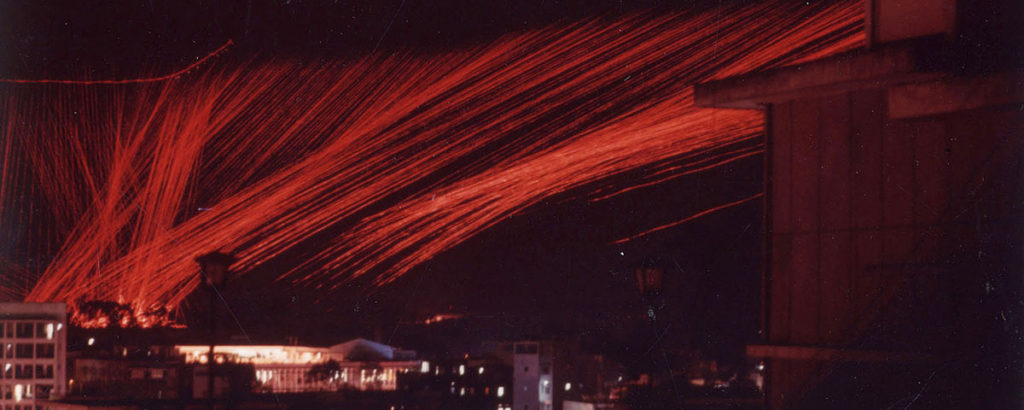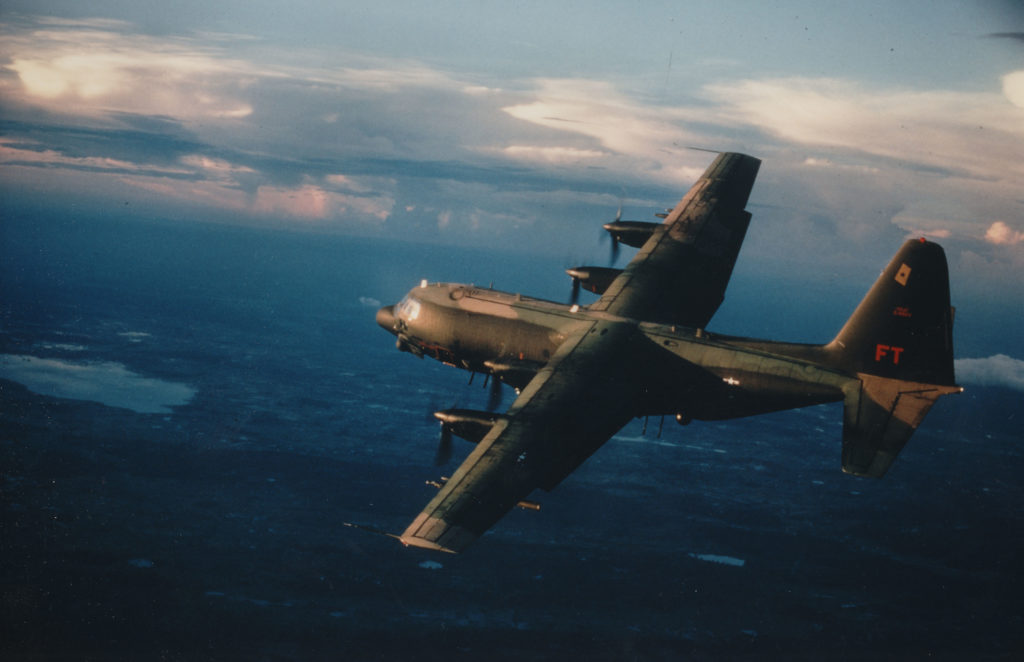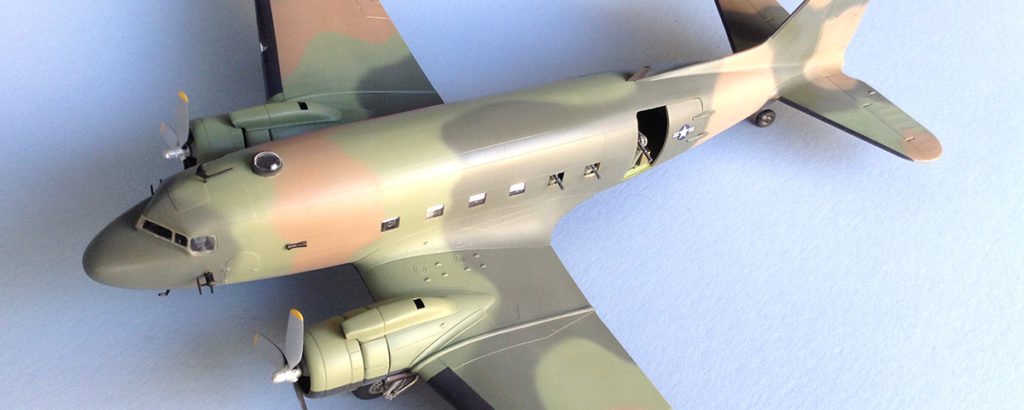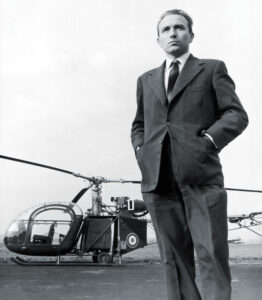The awesome firepower of an AC-47’s miniguns was on full display when an Australian journalist bummed a ride with a “Spooky” crew.
In 1967 a blackened, burned-out wreck lay near the minefield on the perimeter at Bien Hoa Air Base in South Vietnam. It was just one of hundreds of American aircraft lost to enemy action, but there was something special about this one.
The airplane was a “Spooky,” an AC-47 gunship. It couldn’t seem to hold a coat of paint, so they called it The Leper, but it had logged one of the best in-commission records of any aircraft in the U.S. Seventh Air Force. The Leper had started out as a Douglas C-47 transport, serial no. 43-48356, that left the United States for Britain on August 5, 1944, to serve in another air war long ago. Between battles it had racked up time as a VC-47 with Logistics Command and Air Defense Command. In September 1965, Tactical Air Command sent the transport to Eglin Field in Florida to be modified as a side-firing gunship.
Eleven months later the old warhorse was at Bien Hoa with Detachment 3 of the 4th Air Commando Squadron. The squadron’s five detachments were scattered throughout South Vietnam, from the north in I Corps at Da Nang, down through Pleiku and Nha Trang (the 4th’s headquarters) in II Corps, to Bien Hoa near Saigon in III Corps and finally at Binh Thuy in IV Corps in the Mekong Delta.
Early in 1967, I was working in South Vietnam as a stringer for an Australian magazine, and I was keen to fly in one of the old gunships. My first opportunity came on the night of January 22 in The Leper.
Showtime for a Spooky mission from Bien Hoa was around 6:30 in the evening. After clambering into the round fuselage of the militarized DC-3, camouflaged sandy brown with two shades of green and deep black undersurfaces, I acquainted myself with the unique interior of the AC-47: the olive green walls, the flare boxes—one next to the door and one up front—the discolored white fiberglass flak curtains and, dominating it all, the three General Electric GAU-2/A miniguns in their SUU-11/A gun pods. Operating on a principle that went back more than a century to the first Gatling guns, each weapon was capable of pouring out 6,000 rounds of 7.62mm ammunition per minute through six rotating barrels.
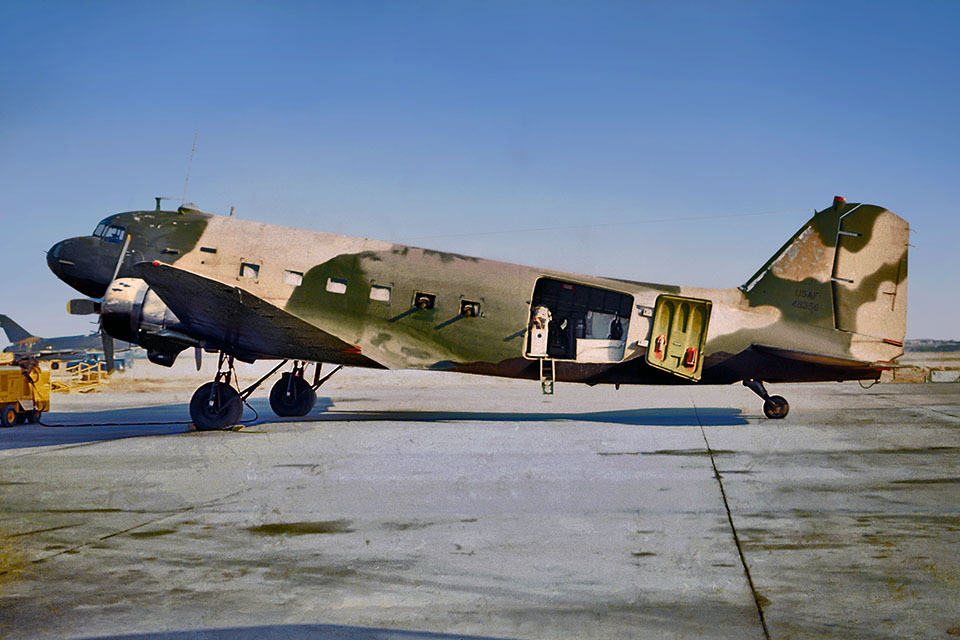
One of the crewmen helped me into a parachute harness, reminding me to make the crotch straps tight and explaining why in no uncertain terms. He pointed out the quick-release clips and hung a chest-pack chute on the harness, with a warning to turn my head away if I had to pull the D-ring. I plugged the jack of my headset into the clip-on lead, and listened to the pilot and copilot run through the preliminaries as we taxied out from the flight line in the very late afternoon sun. It was hot, and sweat poured down the sides of my face. We were airborne while it was still light, and shortly afterward the navigator, Major William H. Niemeier, showed me where we were going and explained what we were about to do: patrol a road about 60 miles from Bien Hoa, close to the Cambodian border, looking for enemy convoys. During the six-hour flight we would fly about a thousand miles at around 135 knots.
At 7:15 the road appeared below. By that time I’d removed my headset and moved back to the main door, now girded by two diagonal safety straps. The Kool-smoking loadmaster pointed to great holes in the ground below and beckoned me to lean my head toward him. He spoke close to my ear: “B-52s.” I nodded and we continued watching the flat, pleasant countryside.
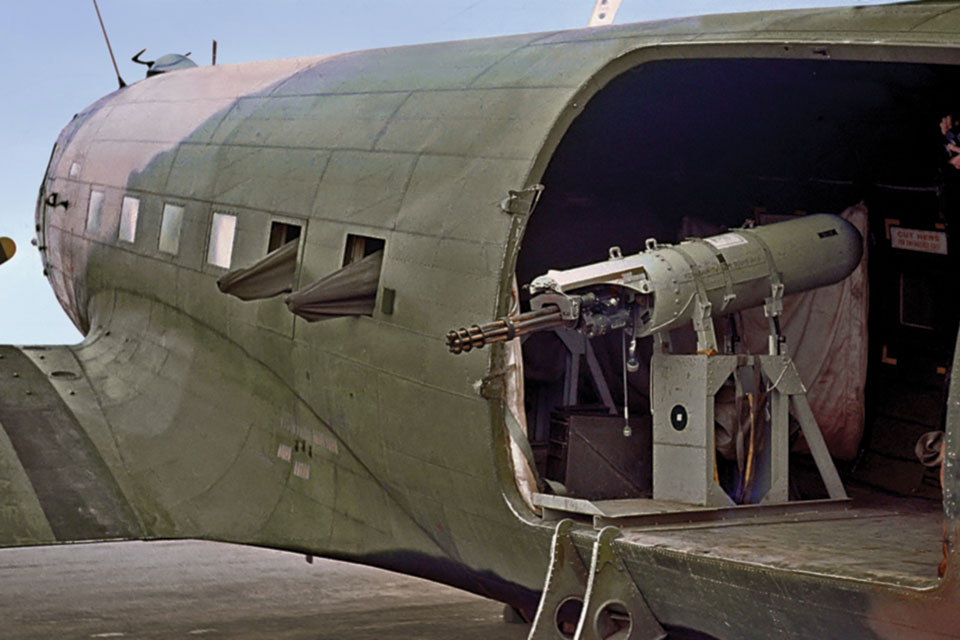
As darkness edged in the two gunners and a Vietnamese observer—who had to get approval for The Leper to start shooting—found various ways to pass the time. Two slept and one read by the light of a small lamp attached to the fuselage on a long flexible arm. Spooky dropped flares, the hours passed. Around midnight I was shaken awake and told we’d be landing in a couple of minutes at Saigon’s Tan Son Nhut Air Base for my convenience. Major Niemeier looked apologetic as he explained, “The other bird’s out where we were at the moment, shooting at sampans on the river—it’s the luck of the draw. Come back and see us again.”
At that time I was heading north to Pleiku and Da Nang, and I wasn’t sure I’d be accepting his kind invitation. But The Leper, with its peeling paint and gray-patched wing edges scarred by the flicked-off phosphorus of the tracer streams, was hard to resist. So a couple of weeks later I again took the monotonous military bus ride from Saigon to Bien Hoa, and with more time to spend I visited some of the Spooky pilots of Detachment 3 in their quarters. Major Harley Jeans, the operations officer, talked about the flak curtains, which some of the gunners I’d met had less-than-boundless faith in. He explained how they were effective if they were slack, but rigid they could not “swallow” a hit. Jeans had a greater concern: “I haven’t felt safe since I saw my first flare, and I won’t feel safe until I see my last,” he said.
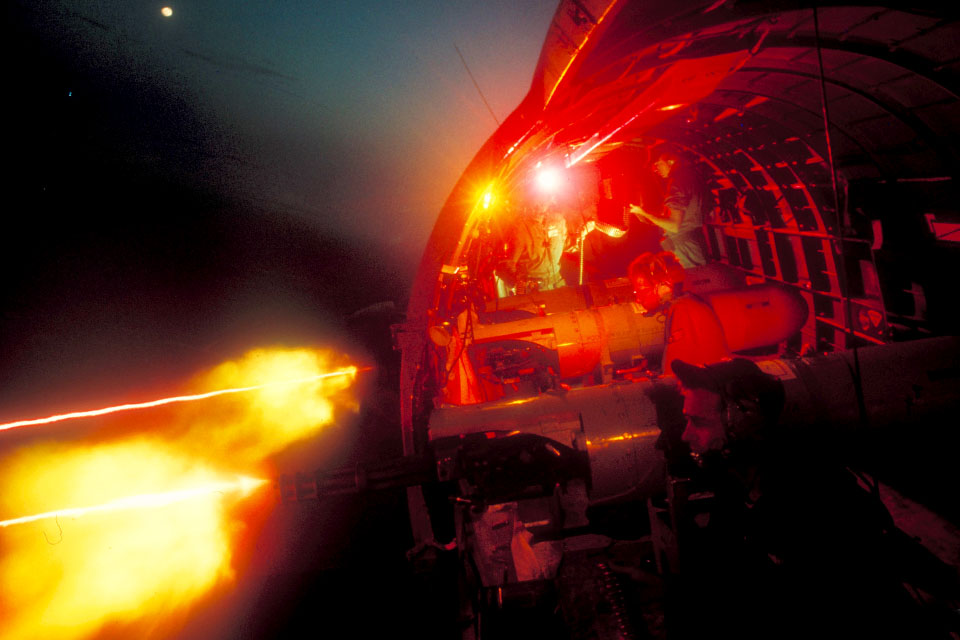
The flares that caused so much consternation were magnesium parachute flares weighing 28 pounds each. These 30-inch cylinders were 4½ inches in diameter and generated 1 million candlepower for three minutes. If Spooky took a hit in a flare box from an incendiary round, that was it—the aircraft was incinerated. Most Spookys that were lost were thought to have suffered that fate, and it was something you tried not to think about.
Gunship pilot Bob Knopf experienced another flare problem—he’d had one of the aluminum cases go right through an elevator when a premature ejection occurred. He thought the hardest part of the job on Spooky was getting the flares in the right place. He also believed that 7.62mm ammo was somewhat ineffective on targets such as trucks, or a sampan he’d poured 6,000 rounds into without definitely sinking it. But he had no doubts about one thing: When Spooky opened up, the enemy buttoned up.
Recommended for you
My second Spooky mission began the same way as the first, and again in The Leper, with Captain Charles A. Boatwright and his crew. I received another briefing on emergency procedures, this time from the loadmaster. He was blunt: “The main exit is the door back there. There are two emergency exits on each side, but the number-two gun’s in that one,” he said, pointing to the left side of the aircraft. “If we take a hit in the flares you won’t be able to get out the door.” He needed to say no more, but continued, “If we have to jump, you go out fourth and try to stay near one of us. Count to three or four before you pull the D-ring at the altitude we’ll be at.”
Again the pleasant countryside stretched out below, beneath a brilliant sunset. The dying fires of an afternoon napalm strike flickered around a blackened patch of ground. One of the gunners read Stars and Stripes sitting on a row of ammunition boxes by the number-one gun. Soon it was dark.
I was dozing off when I felt a tap on my shoulder. I slipped off the disconnected earphones that served a dual purpose by blocking out some of the engine noise. The words “We’ve got a mission” brought me to my feet.
The gunners were arming the miniguns, the sparse light of their little lamps catching the rich coppery glint of the bullets. I moved back against the rear bulkhead by the main door and watched the flares cast a strange light over the earth below, creating deep, ominous shadows. A tiny shape passed below, a forward air controller (FAC) in his Cessna O-1 Bird Dog. Another gunner armed flares by the light of a small flashlight. As he did so he dropped the milky white plastic lids into a quickly filling ammunition box. There was something immediately familiar about those lids, and I couldn’t help thinking that this would be some place to have a Tupperware party. Down below, the flat curving gash of the Song Be River reflected the yellow flare light like a mirror. As the light faded, the on-and-off red glow of our overhead revolving beacon glanced off the wing.
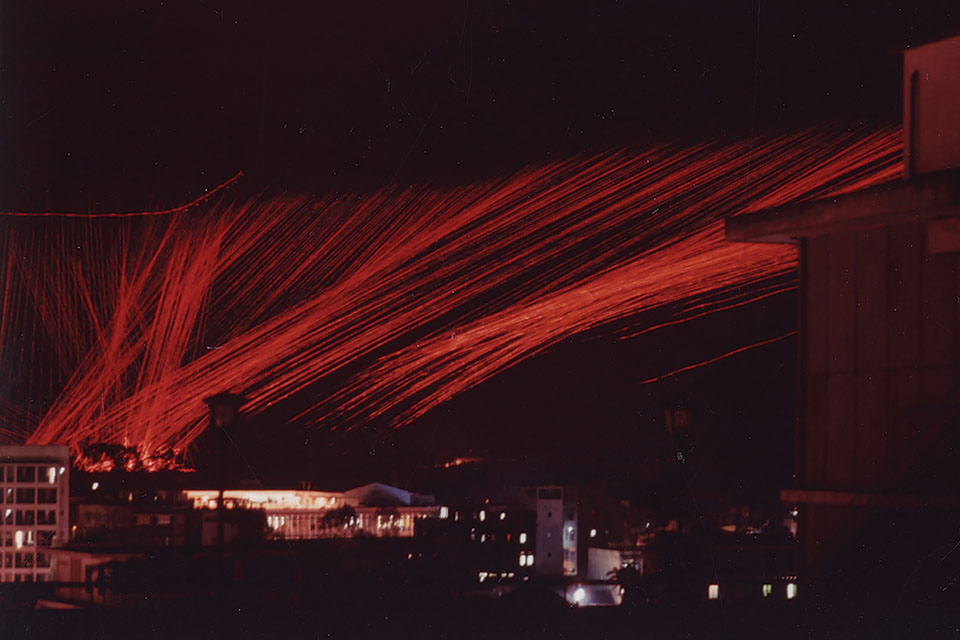
In the darkness below a Special Forces camp was under mortar attack, and they wanted air support, but the FAC couldn’t find a target for us. So Spooky hung around, dropping flares. As the stock in the rear compartmented box was exhausted, the crew formed a chain to move more down from the forward box. A gunner methodically set the flares, and the loadmaster attached them to the lanyard and heaved them out at regular intervals. They drifted down, their glow illuminating the land and, dimly, the aircraft interior. Then the loadmaster spotted groundfire. The Viet Cong were shooting at us with tracers, and everybody tried to pinpoint the position for a firing pass.
Suddenly, the whole aircraft lit up. The roar was deafening, like an insanely loud, grinding buzz—nothing like a gun. The blaze of light moved up the aircraft as Boatwright changed guns, a molten glare framed by the small windows. I saw a great pale yellow tongue reaching out from the side of the airplane, and I could smell the fire. The interior of the AC-47 was as bright as day as streams of red tracers arced toward the ground.
The guns were sighted by the pilot and fired individually. His firing pass was a left bank, and with incoming fire he varied the pattern of each pass. One time it would be a figure eight, then perhaps an oval—enough variation to prevent Charlie from tracking Spooky too accurately.
The number-three gun roared as we got on target again, and a thick stream of brass shell cases poured down into an ammunition box that had been empty just minutes before. Everyone worked swiftly and precisely. The flame died and the barrels of the gun glowed dull red. Another was firing as I moved down the fuselage close to the forward window and watched the pattern of fire from the number-one gun, the tracers spraying out. It was beyond description—people were always pleased to cite the gee-whiz fact that the miniguns could spread a projectile every six inches over an area the size of a football field, but it’s still not easy to imagine. Moving forward to the cabin, I looked over Boatwright’s shoulders at the lit-up reflector gunsight at his side. Below the dully glowing, red-lit instrument panel his feet were constantly moving, manipulating the rudder pedals.
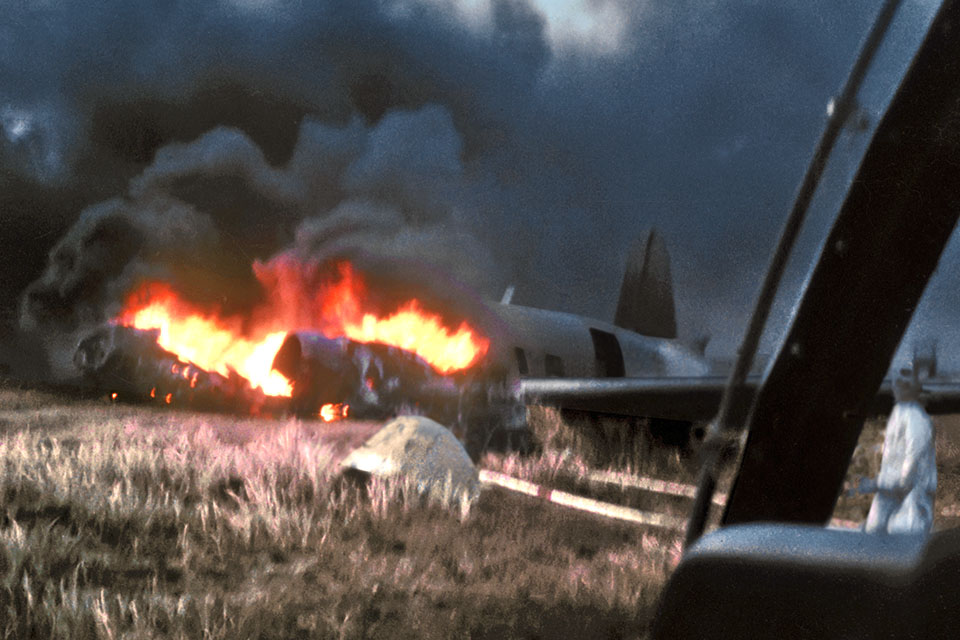
When it was over, all 60 flares had been exhausted and 7,500 rounds had been fired. The enemy was “suppressed” and it was time to go back to Bien Hoa after a relatively short mission—three hours. Spooky would reload and go right out again. I’d completed my second Spooky mission; Chuck Boatwright had completed his 169th.
About seven weeks after I left Bien Hoa, Boatwright was taking The Leper out on Spooky 41, the “early CAP” mission from 1900 to 2400 hours. It was still light and the plane yawed to the right as the gear was coming up. The right engine was about to quit, so the copilot, Captain Erik Vettergren, feathered the prop as Boatwright tried to turn back, realized it was impossible and headed for an open area. The Leper landed gear up, slid about 80 yards and 180’d, twisting the tail assembly at a 90-degree angle. The gunship came to a stop backwards as the left fuel tank exploded. The pilots lit out through their overhead hatch and jumped 15 feet to the ground. Boatwright hit wrong and broke his wrist, his leg and some small bones in his foot, while Vettergren broke an elbow. The rest of the crew didn’t get a scratch. The next morning they found several bullet holes in the right wing and deduced that they had been shot down by sniper fire off the end of the runway. After 24 years, The Leper’s luck had finally run out.
Aviation historian Steve Birdsall writes from Sydney, Australia. For further reading, he suggests: Grand Old Lady: Story of the DC-3, by Lt. Col. Carroll V. Glines and Lt. Col. Wendell F. Moseley; and Douglas DC-3: 60 Years and Counting, by Ed Davies, Nick Veronico and Scott Thompson.
Log of the Leper appeared in the July 2017 issue of Aviation History Magazine. Subscribe here. Looking to build your own AC-47?

